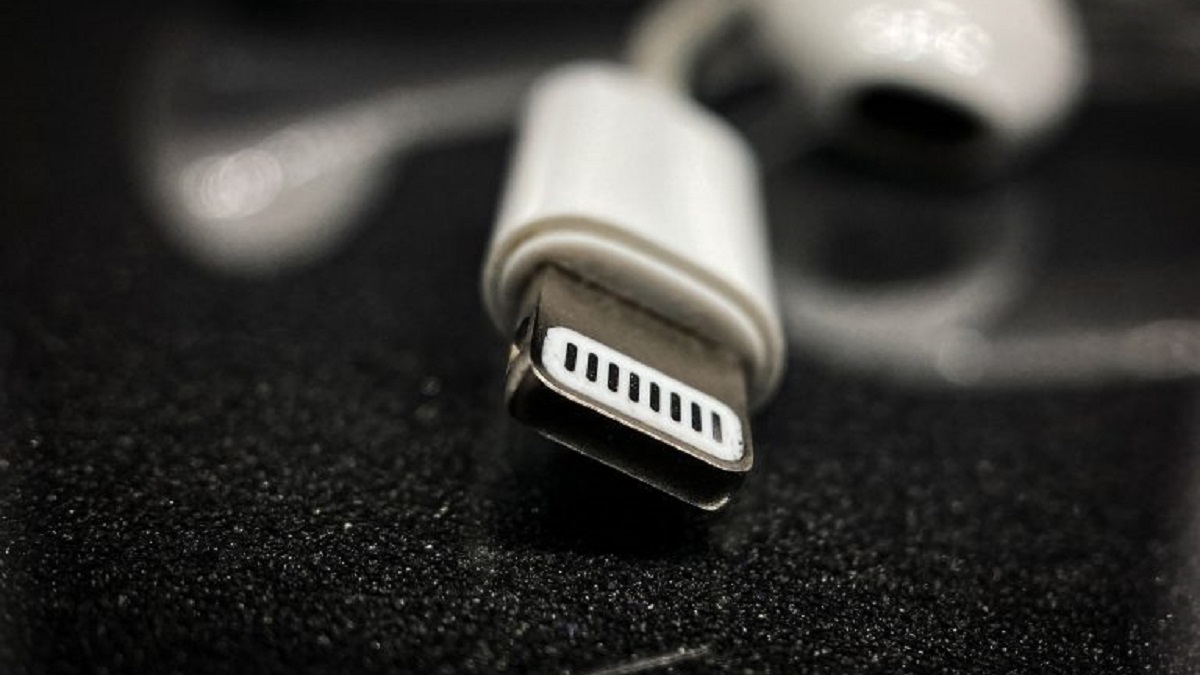
Apple Inc.’s new patent may indirectly admit the iPhone Lightning Cable is its ‘Achilles heel’. The patent mentions that using different materials with “variable stiffness” could minimize damage.
The famous Lightning cable is often the first hardware to suffer damage from everyday use. But a new patent application for a “Cable with Variable Stiffness,” could mitigate some trauma.
Apple patent for ‘Cable with Variable Stiffness’ suggests techniques that prevent or minimize cable fray:
In the otherwise premium and durable combination of smartphone, charger, and charging cable, it is the relatively long and flexible connector that often frays. The fraying is often so bad, the Lightning cable refuses to charge the iPhone it came with.
The patent, first spotted by AppleInsider, describes multiple different ideas for a cable that won’t get frayed easily. Apple suggests giving different parts of the cable “varying levels of stiffness” while keeping the cable uniformly thick.
Interestingly, Apple’s solution could replace another prevalent mitigation technique called “strain relief sleeve”. In other words, Apple wants to eliminate the stiff polymer cap that is at the end of several cables.
Apple patent filing describes a charging cable that doesn't fray https://t.co/XQ0Nl8FjFF pic.twitter.com/rcC5dPbECF
— Engadget (@engadget) February 4, 2021
Traditionally, the strain relief sleeve has minimized bends at the very ends of cables. It is at these extreme ends that the cables often fray. However, the sleeves haven’t exactly prevented fraying.
Through the patent, Apple Inc. is suggesting to use a cable creation technique that varies the flexibility and stiffness across the entire length of cable. The varying flexibility, could, in theory, offer better protection from fraying no matter where it is bent during regular use.
Apple patent application imagines charging cables that might not fray so easily
A Lightning to USB-A cable. | Image: Apple Apple’s charging cables aren’t exactly known for their durability. They often fray after a year or two and can even break down to https://t.co/dyFPiUhya4
— feedas TNA (@feedasTNA) February 4, 2021
It is important to note that the varying thickness will not be visible from the outside. In other words, the charging cable would appear uniform externally.
Incidentally, Apple’s solution may have to do with the problems that users have been facing while using third-party iPhone stands. The company has been gradually increasing the thickness of cables. But some users claimed these new cables no longer fit in channels machined into iPhone stands by third-party manufacturers.
Apple Inc. isn’t admitting its cables are fragile, but is offering some solutions to boost longevity:
Apple’s patent never mentions the word Lightning once. Nor does it say anything similar to the word “frayed.”
However, the patent reads, “It is well known that bending of the cable near the termination point may cause unwanted strain on the wire connections, which may lead to cable failure. Accordingly, it is common to provide a strain relief sleeve made of a stiff material around the end region of the cable.”
Apple patent Program imagines charging cables Which May not fray so Readily https://t.co/7xH2FgwiLD
— Getaka – Know things before others do (@GetakaC) February 4, 2021
“The stiff material creates a localized increase in the bending resistance of the cable, thereby relieving strain on the wire connections. In addition to making the cable locally stiffer, the strain relief sleeve also makes the cable thicker at the ends. In some instances, the added thickness may not be desired.”
This patent could be the closest that Apple Inc. has ever come to admitting that the Lightning cables fray. That said, iPhone owners do tend to use their charging cables extensively, and the fraying is part of the aging process.
As always, this is merely a patent application. There’s no assurance that Apple will use the design or fabrication techniques outlined in the same, in the near future. Still, it is certainly a good sign to see the company thinking seriously about cable longevity.


